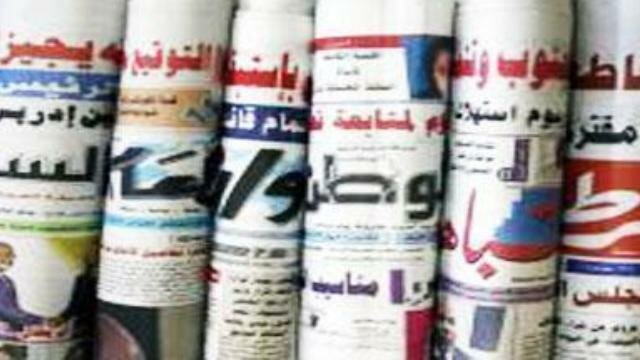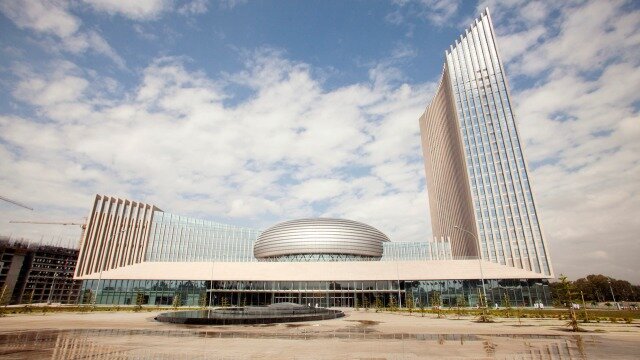The study assesses the macroeconomic context within which IPRSP was implemented, as growth
is considered the single most important factor in poverty reduction. The study also reviews the political environment that supports governance during the IPRSP period. The performance of
the pro-poor sectors/pillars and pro-poor expenditures including agriculture, human development, social protection and welfare, and governance were then assessed. Outcomes for sectors/ pillars against set objectives were established, and constraints and shortcomings to inform the PRSP preparation were identified.
The study adopted a specific definition for pro-poor expenditures building on the IPRSP policies for priority actions for growth and poverty reduction. Attention was also given foro comprehensiveness of the definition by adding non budgetary public expenditures from Zakat Fund and microfinance. Comparison is also made with other pro-poor expenditure definitionsin other studies like the last Sudan’s Public Expenditure Review as well as with Sub Saharan African countries.
Pro-poor expenditures data comprised federal and state level public expenditures. Comprehensive pro-poor expenditure data was compiled from MoFEP budgeted and actual expenditures of the spending units at federal level. Budgeted and actual expenditures of the states and localities were compiled from the states yearly closed accounts. Data for social protection institutions was compiled from the annual reports of Zakat Fund, Social Insurance Fund, National Pension Fund and National Health Insurance for the period 2012 to 2014.
The status report approach involves: (i) a desk review of available documentation on country-level strategies and analytical work including the IPRSP, Education Sector Strategic Plan (2012–2016), Status of Education Sector (2012), Darfur Development Strategy (2013), Social Initiative
Program, and so on; (ii) consultations with: (a) Government team for IPRSP and PRSP staff ; (b) key world Bank Group staff involved in the consultation process of the IPRSP; and (c) development partners; (iii) presentation of earlier drafts of this report to ministries staff at the federal and state
levels as well as at the meeting of the Poverty Reduction Strategy Paper High-Level Working Group held on December 13th, 2015, based on the preliminary assessment of topics developed during the desk review, with the view to test preliminary assumptions/ hypotheses, and deepen our joint understanding of key issues.
The remainder of the status report is structured as follows. Following the background of the IPRSP and the rationale and objective of the report, the second chapter describes the political and external environment setting within which the IPRSP was implemented. Chapter 3 assesses the macroeconomic framework performance of the IPRSP. Chapter 4 defines and tracks propoor expenditures. Chapter 5 analyses challenges and opportunities of the pro-poor sectors. The last chapter presents conclusions and implications for the PRSP considerations.
Country Context
Sudan has suffered from prolonged years of conflict, volatile security situation, political transition, unsustainable debt burden, economic and financial sanctions and fragile relations with the international community, all of which have severely constrained the country’s broad-based growth prospects and poverty reduction efforts. In spite of Sudan rising to lower middle income status in the last decade due to oil wealth, the country has high poverty and inequality.
Yet, Sudan holds tremendous potentials, much of it unrealized. Some of this potential was realized in earlier decades, including in early industrialization, in large scale irrigation in support of food and export crop agriculture, and in investments from recent natural resources discoveries (e.g., oil and gold). Sudan is still a large country, being now the second largest country in Africa, even in its diminished state after having lost 33 percent of its territory, 23 percent of its population, and 70 percent of its recent oil-driven revenues due to secession of South Sudan. Sudan holds
the potential to be an economic powerhouse. Sudan is located at the crossroads of Sub-Saharan Africa and the Middle East, with fertile lands, abundant livestock, large mineral reserves and manufacturing that make it the third largest economy in North. (after Egypt and Morocco)
and the largest economy in the greater eastern Africa region.
Political / Security Development
Agreements with South Sudan and Post Secession Issues
Sudan ended the longest civil war in Africa. Conflict in Southern Sudan started in 1955, one year before Sudan achieved independence. Sudan has signed on the 9th of January 2005 theComprehensive Peace Agreement (CPA), ending Africa’s longest civil war that lasted for more than 50 years. The agreement was described by many as a bold and courageous step. Sudan has accepted giving South Sudan the right of self-determination, an unprecedented achievement in the history of Sudanese politics. A Referendum was held in January 2011, resulting in the secession of South Sudan. The Government of Sudan, accepted the will of the Southern Sudanese population, adhered to the results of the referendum, allowing for a peaceful secession despite the political, economic and social implications. Furthermore, Sudan became the first state in the world to recognize South Sudan when the Republic of South Sudan was formed on July 9, 2011.
Although the referendum and secession were achieved peacefully, the CPA-mandated process nevertheless left many contentious post secession issues unresolved. These include an agreed boundary demarcation of the 2,000 km border between Sudan and South Sudan, the determination
of oil transit fees to be paid by South Sudan for using the 3,000 kilometers long Sudan’s oil pipelines,1 and status of Abyie. Negotiations on post secession issues brokered by an AUHIP chaired by former President Thabo Mbeki were successful in brokering an agreement in late September
2012.
On 27 September 2012, Sudan and South Sudan successfully signed nine agreements on a range of pending issues that they have been negotiating since 2010, initially in accordance with the post-referendum agreement negotiations. The agreements covered the following. The Agreement on Security Issues in which the two states agree to immediately operationalize the Safe Demilitarized
Border Zone (SDBZ) in accordance with the administrative and security map, presented to them by the AUHIP in November 2011.
The Agreement on Border Issues (including demarcation) which specified managing the borders with the “soft borders” and “integrated border management approach” principles including ways of dealing with nomadic movements.
The Agreement on Economic Certain Matters (division of assets and liabilities) where the two states
agreed that Sudan would retain all external debts and assets (“The Zero Option”) on condition that Sudan obtains debt relief, within two years, through the highly indebted poor countries initiative (HIPC). The Framework Agreement to Facilitate Payment of Post-Service Benefit.
The Agreement on Trade and Trade-Related Issues where the parties have agreed, that they will cooperate but each state shall pursue an independent trade policy. The Framework Agreement on Nationality which gives nationals of each State the right to enjoy “the four freedoms” of:
residence, movement, undertake economic activity and to acquire and dispose of property. The agreements also included Oil Agreement where South Sudan will pay oil transit fees and Transitional Financial Assistance (TFA) to Sudan over a period of 3 1/2 years to cover one third of
Sudan’s financial gap resulting from the loss of South Sudan’s oil.
The conflict in South Sudan, which erupted in December 2013, has affected the implementation progress of the agreements with Sudan and forced many South Sudanese to seek refuge in Sudan. Sudan has granted unrestricted access to its territory to refugees from South Sudan and has
received more than 196,000 of them by mid-2015.
South Kordofan, Blue Nile States and Abyei Area
Although the referendum and South Sudan secession were achieved peacefully, not all conflict has been arrested. Renewed conflict in ‘the Three Protocol Areas: Blue Nile and South Kordofan states and Abyei area’ is disruptive. Protocols for all three areas have not yet been fully implemented. Abyei final borders position is not yet settled. Although the CPA stipulates a referendum for this contested area, this has yet to be conducted. Negotiations between the two governments in Addis Ababa and Juba led to an agreement in December 2011.
This agreement allowed UN mandated Ethiopian peacekeepers into the region to oversee the withdrawal of both the Sudan Armed Forces (SAF) and armed groups aligned with, or part of, South Sudan’s SPLA. Sudan Armed Forces withdrew from the region in adherence to UNSC Resolution 2046 on Sudan and South Sudan in May 2012.
Popular consultations in the States of South Kordofan and Blue Nile, as set forth in the CPA, have not been finalized. Armed conflicts erupted in both States between the Government of Sudan and the SPLM-North. Tensions in both areas have heightened following the creation in November 2011 of the Sudan Revolutionary Front—an armed coalition against the Government comprising SPLM Northern Sector and all Darfur rebel movements that advocates for the removal of the Government. Several attempts to negotiate a peace agreement have failed so far. A new round of
talks is expected to resume.
Implementation of the Eastern Sudan Peace Agreement
Eastern Sudan Peace Agreement (ESPA) between the Government of Sudan (GoS) and the Eastern Sudan Front in 2006 has created a positive environment for returning to the path of development.
Eastern Sudan remains one of the poorest regions among the northern States of Sudan. East Sudan is also a “host community” to refugees from Ethiopia and Eretria. The ESPA was politically supported by the donor community and “The International Donors and Investors Conference for East Sudan” was held in Kuwait, 1–2 December 2010. Out of the total pledges of US$3.5 billion few development partners pledged significant amounts. Sudan Government pledged
US$1.5 billion, and Kuwait Government pledged US$500. A Special Fund for Rehabilitation and Development of Eastern Sudan was created as an implementation mechanism. Several projects were implemented since then including Setiet and Upper Atbara Dam (total cost of around US$2
billion funded by loans from the Arab Funds), rehabilitation of Toker Delta Irrigation Projects, rehabilitation of New Halfa Irrigation Scheme, schools, hospitals and water supply projects. Most of these projects were funded by the Government.
Doha Document for Peace in Darfur
Another important peace agreement signaling Government’s willingness to resolve conflict and permit development to re-start is the 2011 Doha Document for Peace in Darfur. A credible window of opportunity for sustainable peace has opened in Darfur since the signing of the Doha Document
for Peace in Darfur (DDPD). The establishment of the Darfur Regional Authority (DRA), the start of voluntary returns, and the engagement of the Government of Sudan in implementing the DDPD present an important opportunity to the international community to support recovery and development efforts. For the first time in a decade, these developments offer opportunities to transition away from the current humanitarian strategy (which costs about US$10 billion over the last 10 years), which development partners now recognize to be unsustainable and cost ineffective,
towards engagement in early recovery and development. This can positively impact the lives of millions of people in dire poverty and enhance chances for sustainability by building institutional capacity.
The Internal Political Dialogue
In January 2014, the President of Sudan initiated an internal “National Dialogue” to address issues of war, peace, national identity and the economic and political situation. The dialogue was initiated as an inclusive process for all political parties and all rebel groups. A group of “7+7 Committee” consisting of government ruling parties and opposition parties was formed and has set a road map for the procedures and modalities of the dialogue. The elections which took place during April 2015 interrupted the process. The dialogue resumed in October 2015 and the Government
declared its intention that all the process will be inside the country. A two-month ceasefire was unilaterally declared by the Government, and was reciprocated by the rebel movements; amnesty was also given for arms bearers who will join the process and the Government offered guarantees
to rebel delegations during the national conference to allow them to leave the country if no agreement is reached. The major rebel movements and some of the political parties boycotted the dialogue but a committee from the participating political parties was formed to convince the
holdout political forces to join the process.
-
Daily Arabic Newspapers Headlines Monday 22nd January, 2018Next >


